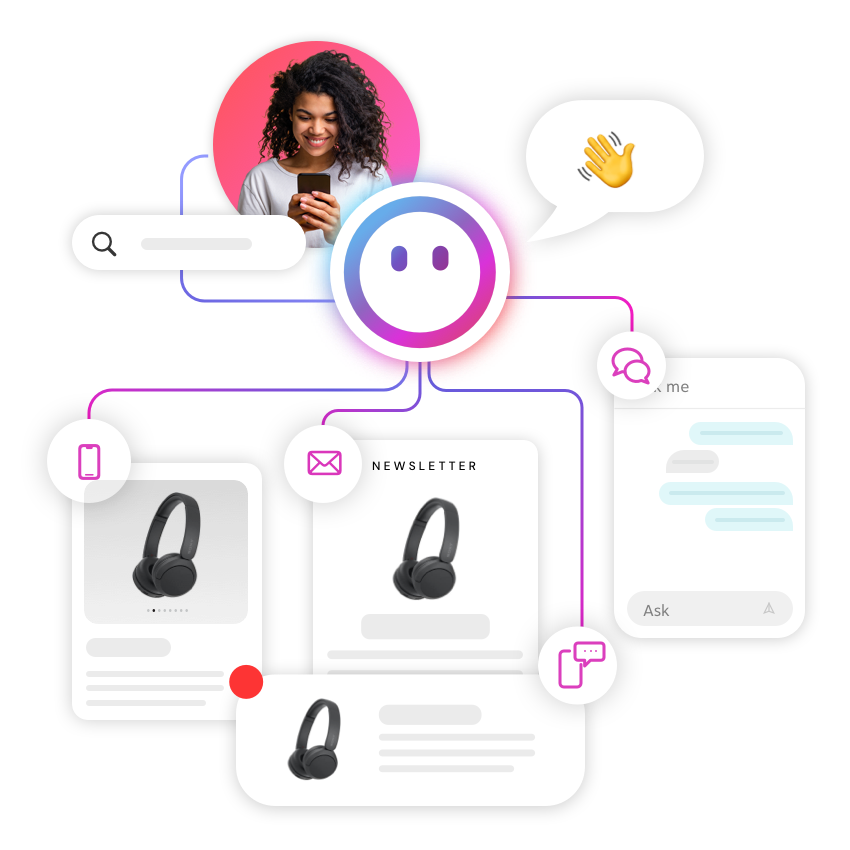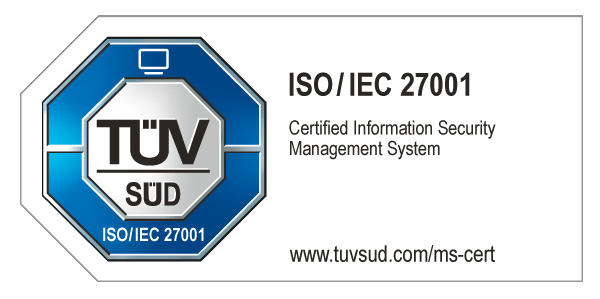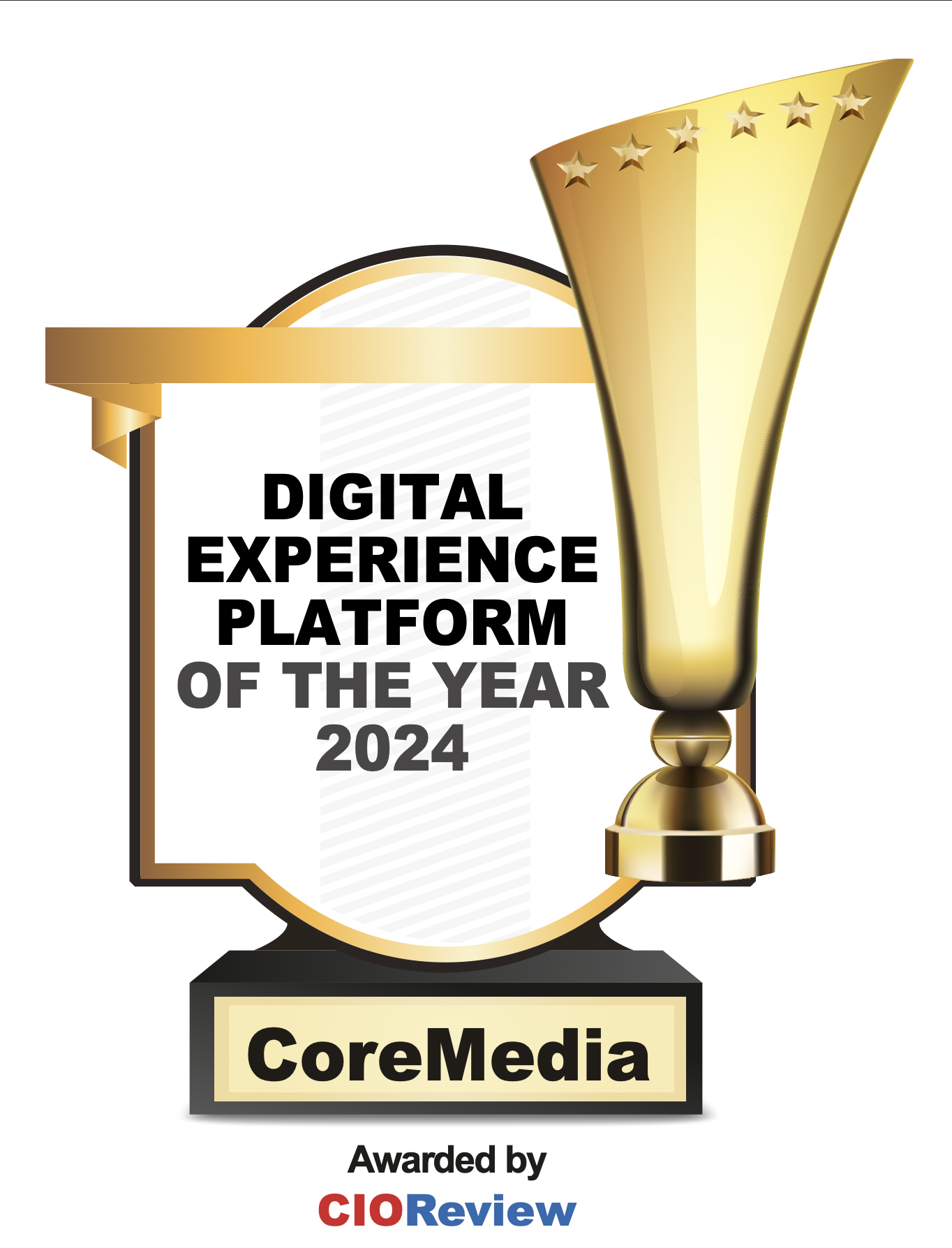A few months ago, OpenAI released ChatGPT to the public. The hugely popular chatbot is based on GPT-3, a combination of various deep learning language models. Since then, the topic of AI continues to steadily gain attention.
The reasons are obvious — ChatGPT is revolutionizing how businesses interact with their customers and how businesses interact internally. With its natural language processing capabilities, ChatGPT can understand human conversations and generate accurate personalized responses in real-time.
There’s even more; AI-driven image generation services like DALL-E, also powered by OpenAI, theoretically provide the means to generate any image that businesses may need, to best complement messages with their customers.
This is certainly only the beginning. Google and other companies have already announced the release of similar, competing AI services in the near future.
Why should I care?
The big question is: why are AI-powered services like ChatGPT relevant for businesses using a digital experience platform, such as CoreMedia Content Cloud? What provides the tangible business value next to all the general hype about this fascinating technology? And how does it all fit into CoreMedia Content Cloud?
First of all, we need to clarify the difference between ChatGPT and GPT-3. Both are deep-learning language models. While ChatGPT is specialized for conversation, GPT-3 is a more general-purpose model, which can be used for a wide range of natural language tasks, like text summarization, answering questions and translation.
However, neither are meant to provide the most accurate answer, or make decisions for you. Rather, they are outstanding tools for understanding and generating natural language.
The use cases that are relevant for business are manifold and not limited to generic human language. Models can be fine-tuned and trained for environments with very specific wording — think of a B2B manufacturer for special machine equipment — but we’ll discuss this further on.
Use cases
There are so many relevant use cases that it is impossible to discuss them all in this short text. However, I want to highlight a few of them.
#1 Text generation for specific audiences
Nothing is worse than having to create a compelling product description for your brand-new product. You have some technical specifications and a few high-level bullet points, but then writer’s block hits. You stare at a blank sheet of paper that needs to be filled with inspiring words and can’t even figure out where to start.
This is one of the most obvious tasks where GPTs come into play. Just ask them to “write a few paragraphs on a product X with some attributes Y and the how level benefits of Z,” and you will most likely get a decent first version that you can then edit.
There’s even more to it. You can apply a certain tone to the generated text for a specific audience. Simply add something like “and write it in a language best suited for people above the age of 40”, or “write it for Generation Z”. Or whatever fits best to your target audience – btw: this is also what I did when I first started writing this article ;-)
The results are stunning – and demonstrate the fundamental shift that ChatGPT and the like will create.
#2 Text summary for specific audiences
Another valuable use case is the automatic generation of summary texts. Think about a sharp tagline or some compelling teaser copy – GPT-3 will easily do the job for you or at least inspire you. Keep in mind that one of the most powerful capabilities is to generate the summary in a certain tonality – potentially personalized to target different members of your audiences.
#3 Metadata generation and SEO
The entire topic of metadata generation is an important value driver – be it metadata for internal governance purposes, keyword or tag generation for automatic tag-driven experiences (see my blog post for more details on the benefits of tag-driven experiences) or the huge topic of SEO.
In real life, the possibilities of optimized metadata handling and SEO are neglected, due to the high workload of editorial teams. CoreMedia Content Cloud natively provides several means to apply automated rules, designed to optimize for search engines, including URL segment generation and HTML metadata generation, from existing editorial content. The use of expert services, often AI-driven, also makes an additional difference.
To best support leveraging those expert services, CoreMedia Content Cloud launched the Experience Feedback Hub. This enables a composable architecture, allowing customers to plug in external third party services into CoreMedia Studio to enhance content and optimize its quality. Many connectors are available, including integration with AI-driven image recognition tools, such as Imagga, or optimization tools like Acrolinx, Siteimprove or Searchmetrics. The following screenshot shows the Searchmetrics example in action:
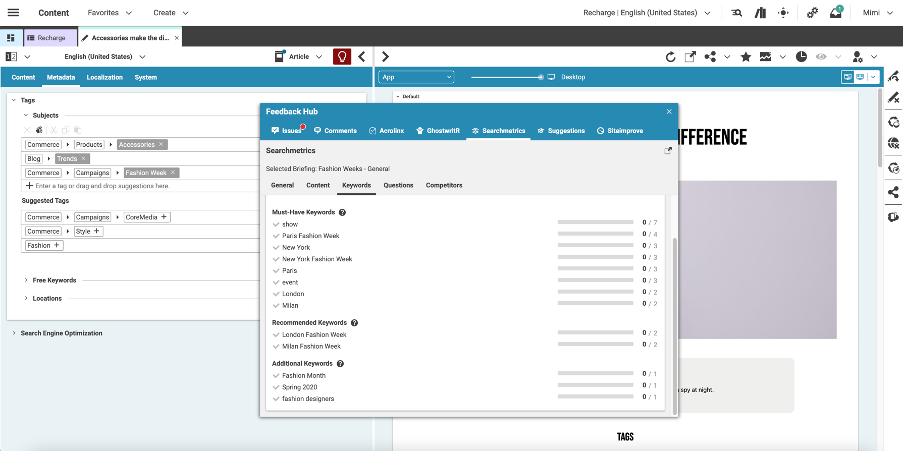
We’ll see that this is also the proven foundation for how we can now easily integrate with OpenAI services, such as ChatGPT.
#4 Image Generation
There are many tools and services that provide a lot of value, but the simplicity and high quality of some of the OpenAI services are highly compelling. Take DALL-E as an example: like the text-driven use cases above, you can steer the image generation process through the input of natural language. “Generate a picture with friendly smiling people,” would be a standard example.
One could correctly argue that stock photo services can yield very good results as well — CoreMedia Content Cloud integrates with these services based on its Content Hub, a great example of our composable architecture. Content Hub supports integrating third party content services into CoreMedia Studio, so that business users can easily search, preview, and find the images they are looking for, and then create experiences simply via drag-and-drop.
The difference with services like DALL-E is that you can now fine-tune the resulting picture, i.e. changing colors, backgrounds, and removing objects — or even people. In terms of digital experiences and different audiences, the possibilities here are just enormous!
Why CoreMedia Content Cloud?
You might already see the advantages of OpenAI services like GPT-3 for text-driven or DALL-E for image use cases. But what value does CoreMedia add?
With CoreMedia Content Cloud, you have the composable architecture necessary to plug in new services quickly – and not just a standard from off the shelf, but one that is adjustable to your needs.
Content Cloud Composable Architecture
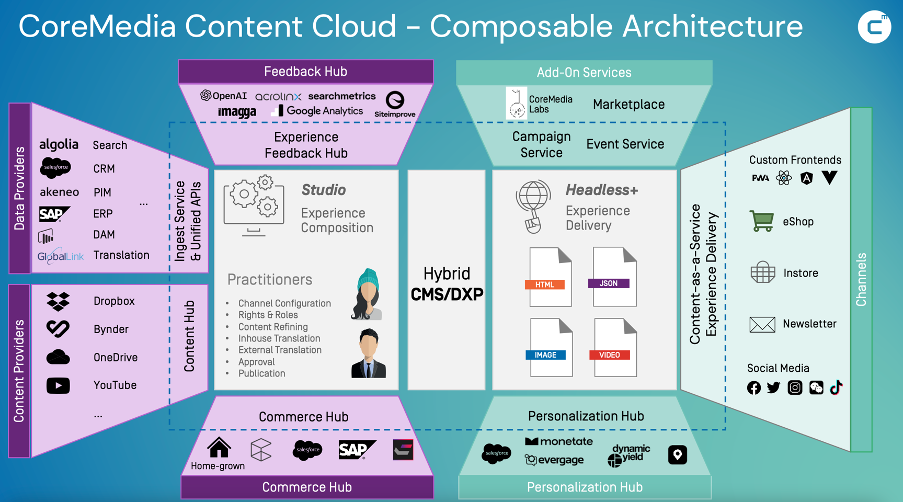
CoreMedia Feedback Hub is well integrated into the editorial processes within CoreMedia Studio. It provides examples of basically any kind of feedback and optimization loop to be integrated:
- Human feedback by the editorial team based on the Editorial Comments
- Quantitative feedback by CoreMedia native capabilities such as the Content Issues
- Qualitative feedback by third party expert services such as Siteimprove, Acrolinx, Searchmetrics, etc.
- AI-driven feedback by third party expert services such as Imagga – and now Open AI.
CoreMedia has also developed its first integration with OpenAI, again proving its simple composability. With just a little development effort based on CoreMedia Feedback Hub, we now have a seamlessly integrated powerful AI solution that makes a difference.
See an animated image screencast below. It demonstrates the first use case mentioned above — let ChatGPT generate text based on a question or a general idea.
Entering text like “write an article on summer fashion trends in a language suited for generation z” will yield the desired outcome that is, at the very least, a great start to your own story.
ChatGPT Screenshot 1
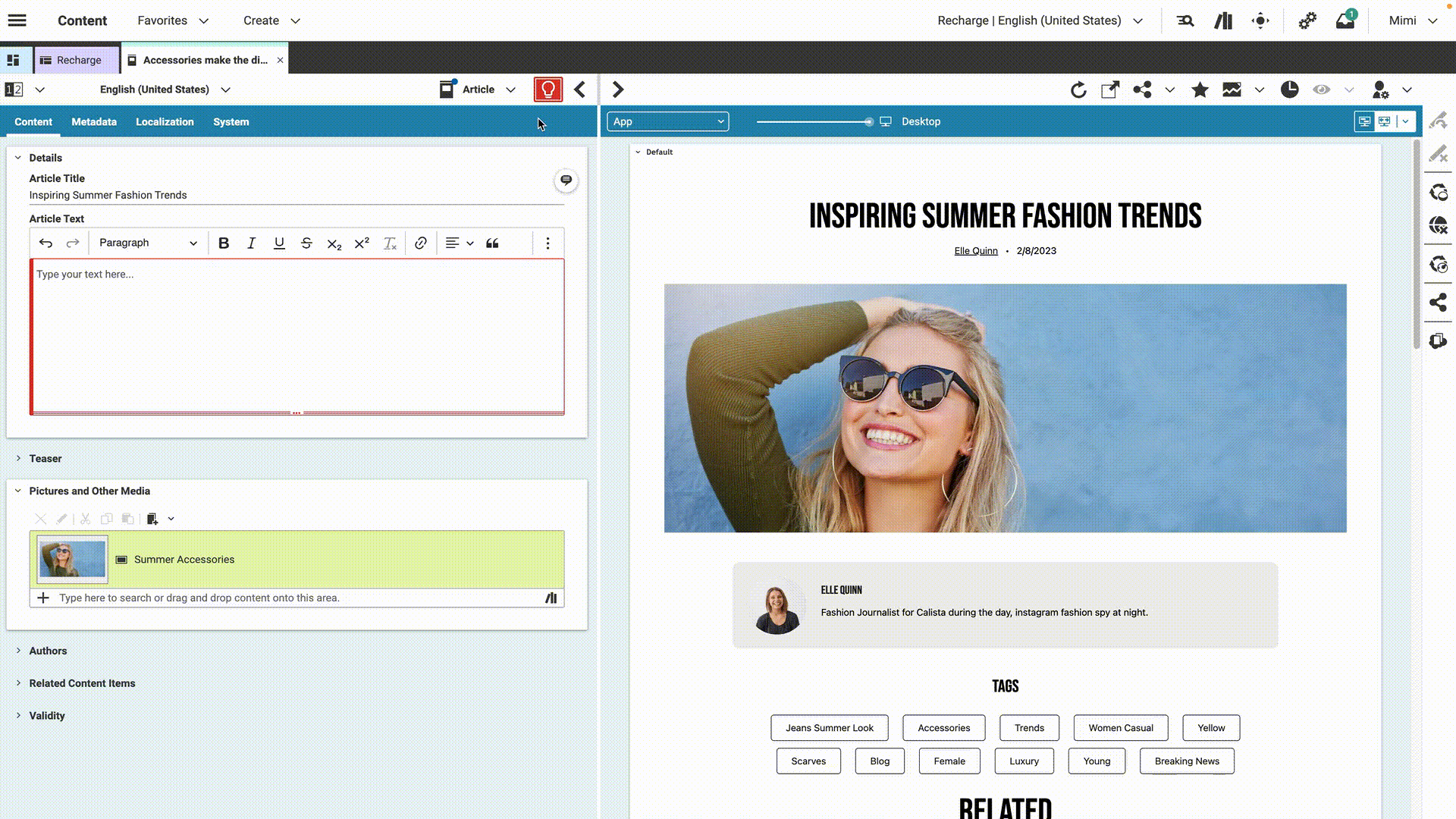
We also support the additionally mentioned use cases, but we’ll go into further detail in a future article.
While this is surely only the first step to understanding what is possible, it is also clear that there are many open questions from businesses regarding real-life use cases like:
- How can I train the GPT language model to use my business domain?
- What SLA do I get for OpenAI services?
- What about privacy issues? What happens with my (training) data?
- What about intellectual property?
- etc.
CoreMedia has partnerships with professional service providers that address and solve these issues. There are CoreMedia Content Cloud customers already using services based on the GPT language model in real life — with a trained language model specific to their business domain. Nothing that we can reveal in this post publicly, but the cases are compelling!
If this is interesting to you and you want to learn more about the details and possibilities — please do not hesitate to contact us.
Looking forward
Services like ChatGPT won’t tell you what to do next – or provide all knowledge in the world. They “only” know and understand what they`ve been trained on, but this is something you can use to do certain tasks much faster and much better than you would without.
It is precisely the benefit of a customizable service platform like CoreMedia Content Cloud to leverage new services as quickly as possible. Don’t wait for your all-in-one suite vendor to deliver some solution for all of their customers that won’t be a good fit for your business. Rather, leverage smart extension points to get a tailored solution that perfectly fits your needs.
Keep in mind, it’s one thing to try ChatGPT and similar services out in a separate sandbox. This is a simple approach that is still very detached from your normal business. However, you likely need a neat integration into your daily business tools — such as CoreMedia Content Cloud. We have shown some examples of how seamless this can be. We also recommend having a service provider in place that can help you train and optimize your language model.
We are living in exciting times. This is for sure just beginning.
If you are interested in discussing this further, please get in touch with my colleagues or me — more to come!
